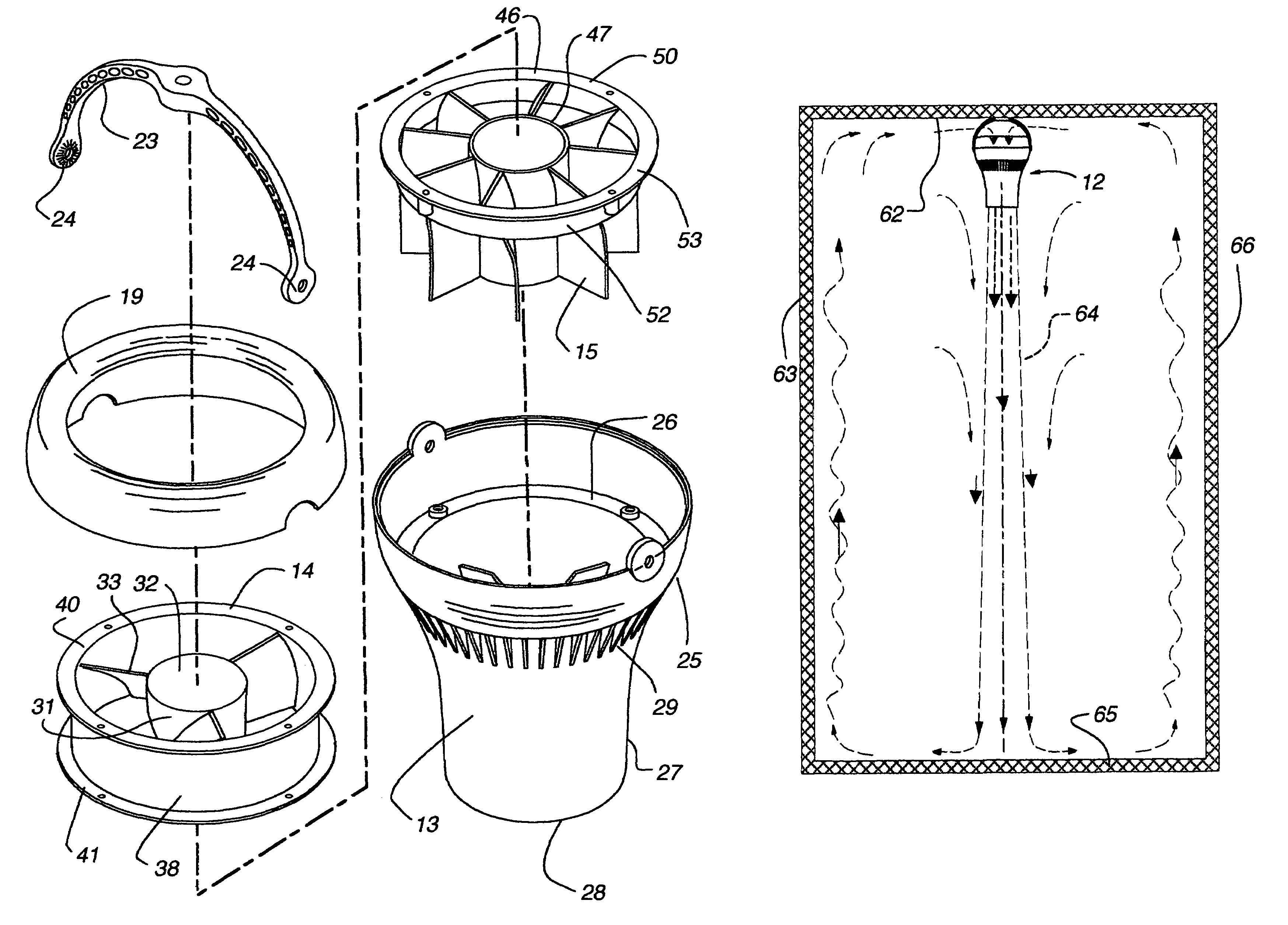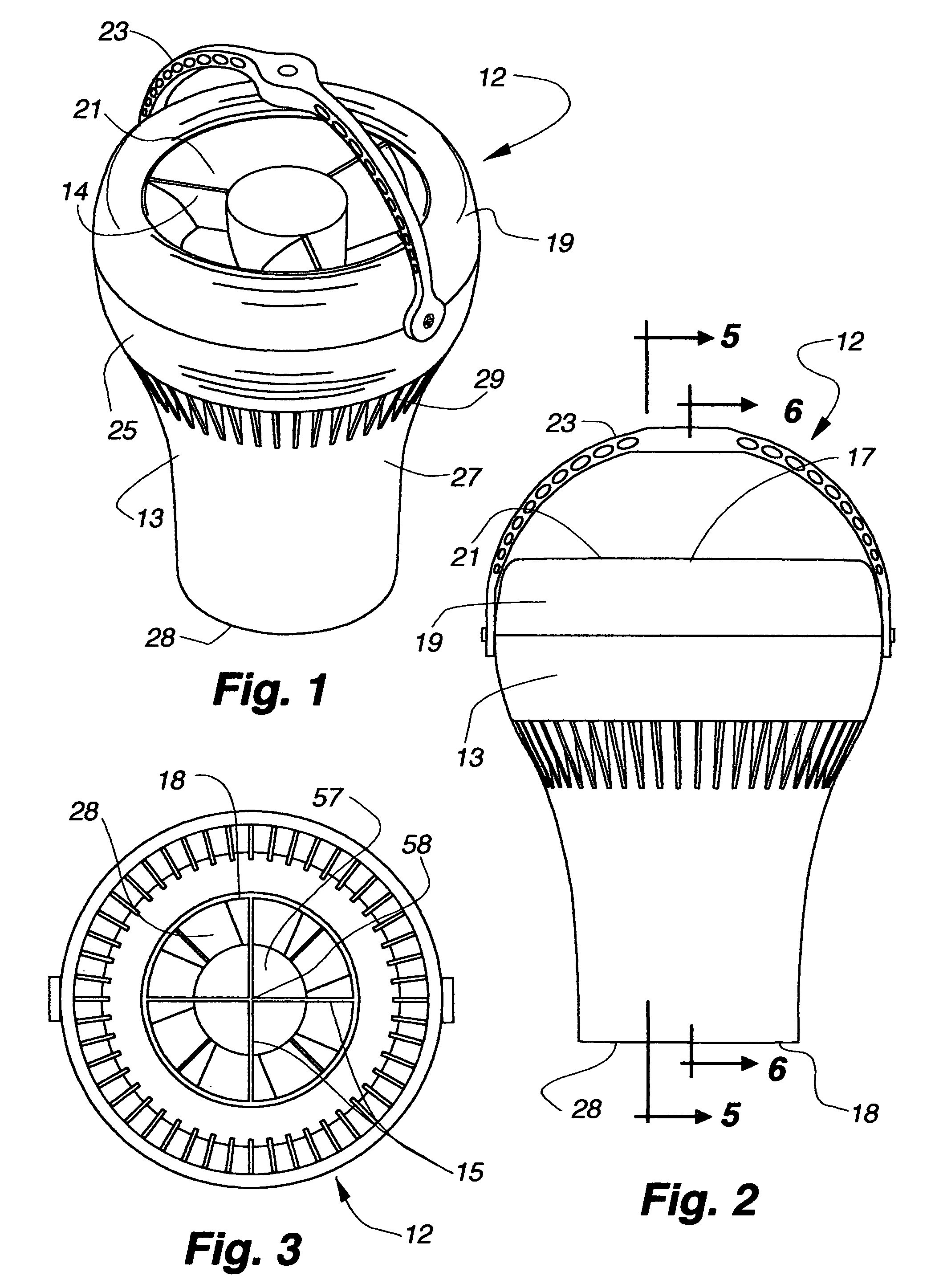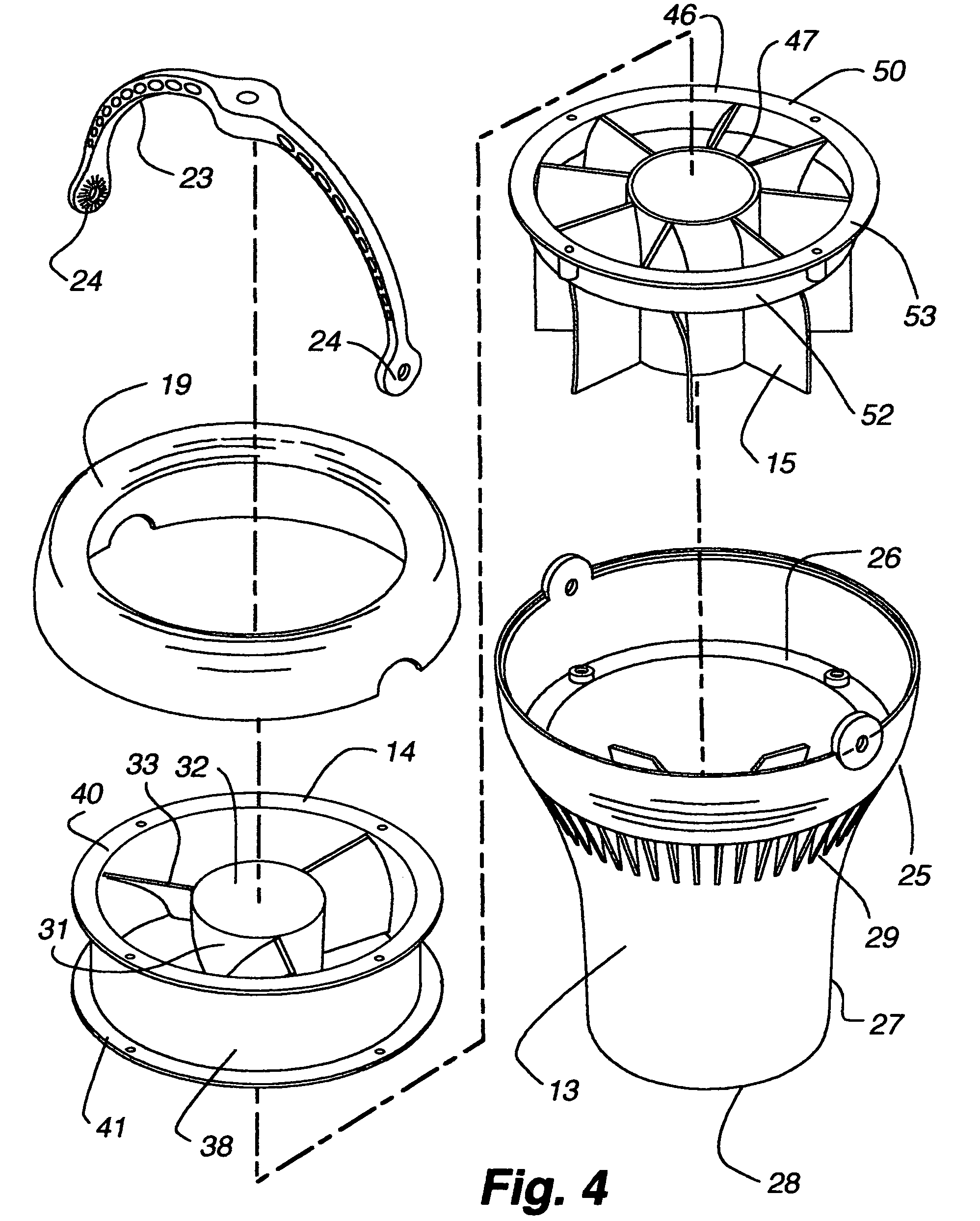Columnar air moving devices, systems and methods
a technology of moving devices and columns, applied in ventilation systems, heating types, vessel construction, etc., can solve the problems of stagnant or dead air in low and high ceiling rooms, affecting the air quality of the air space, and reducing the cost of heating and air conditioning, so as to reduce the rotary component, the effect of minimal lateral dispersion and minimal lateral dispersion
- Summary
- Abstract
- Description
- Claims
- Application Information
AI Technical Summary
Benefits of technology
Problems solved by technology
Method used
Image
Examples
Embodiment Construction
[0034]Referring now to FIGS. 1 to 9, there is shown an air moving device 12 having an elongated outer housing 13, an electric rotary fan 14 in the housing for producing air flow in the housing and a plurality of longitudinally extending, outer radial vanes 15 and an inner housing hub 16 opposite the vanes in the housing downstream of the fan for directing air flow in the housing.
[0035]The housing 13 has a circular cross section, and an open first end 17 and an open second end 18 spaced from the first end 17. In the illustrated embodiment, a detachable, axially outwardly convex cowling 19 forms the first end 17 and provides an air inlet 21 with a diameter slightly smaller than the outer diameter of the cowling 19.
[0036]The housing 13 has a first section 25 extending from the cowling 19 to an interior shelf 26. A generally C-shaped hanger 23 mounts at opposite ends 24 to opposite sides of the housing 13 at the upper end of the first section 25, for mounting the air moving device 12 to...
PUM
 Login to View More
Login to View More Abstract
Description
Claims
Application Information
 Login to View More
Login to View More - R&D
- Intellectual Property
- Life Sciences
- Materials
- Tech Scout
- Unparalleled Data Quality
- Higher Quality Content
- 60% Fewer Hallucinations
Browse by: Latest US Patents, China's latest patents, Technical Efficacy Thesaurus, Application Domain, Technology Topic, Popular Technical Reports.
© 2025 PatSnap. All rights reserved.Legal|Privacy policy|Modern Slavery Act Transparency Statement|Sitemap|About US| Contact US: help@patsnap.com



